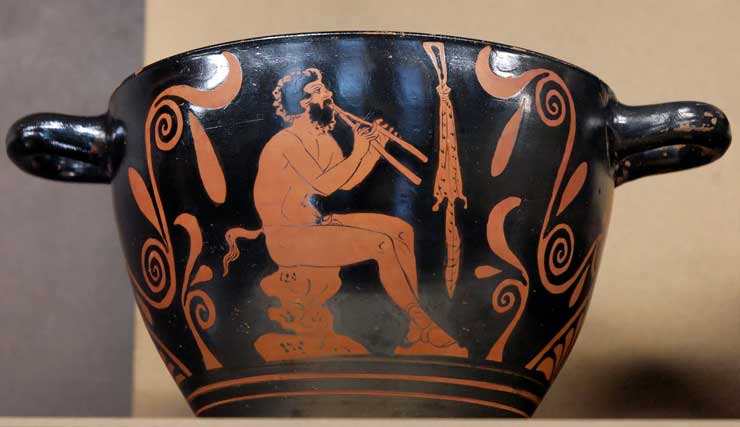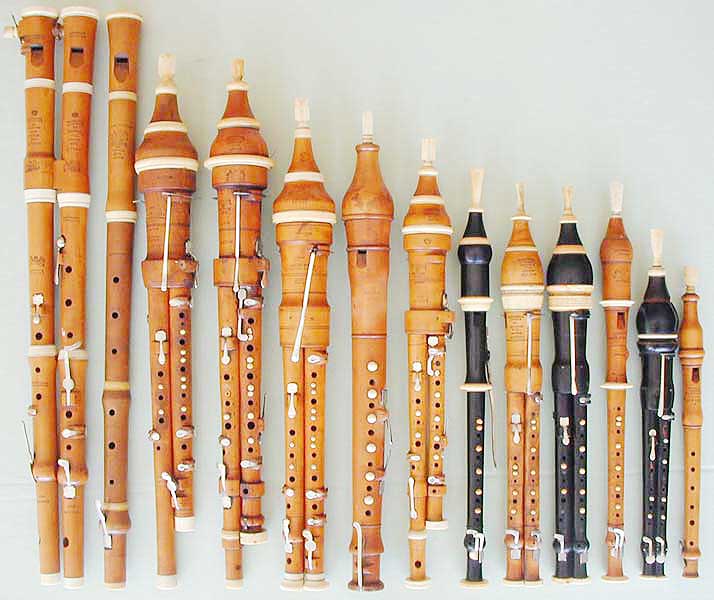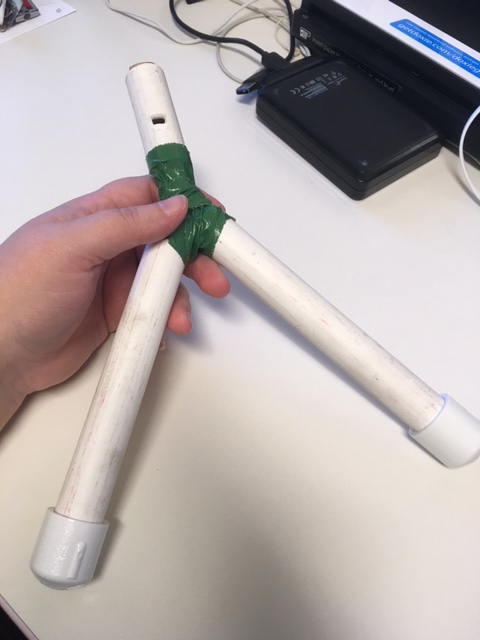You’re absolutely right about being unable to produce that sound on an instrument of that size and shape. (I did do quite a bit of research before I brought my question here, and recreating the prop in question has been discussed before.) The duduks used to create the sound are longer and therefore lower in key than any sound the small instrument depicted could produce, even if functional. And it might even be impossible to play the same tune at a higher pitch given that it looks like it would have a more limited range of notes. Possibly if it were recreated as a single chamber ocarina…I know Songbird Ocarinas made a wishbone-shaped instrument some years ago, but it had only four holes and a fairly limited range. Though I’m leaning at the moment toward a more limited range if I can get the pipes to work in harmony even if I can’t play the “Narnian Lullaby”. that would be icing, but it’s not really one of my requirements.
But I’m still not really understanding how the two instruments I posted would have worked. So basically the thinking is that they made a bunch of holes, then plugged the ones they didn’t want so they could pitch the pipes up or down to perform a specific piece? What happens to the sound when there’s no division between the two chambers? (These are things I plan to experiment with, but any information I can get going in would be helpful.)
Eric the flutemaker demonstrates a number of possibilites on playing double pennywhistles: https://www.youtube.com/watch?v=Jras69X1XsQ
In his demonstration you can see how both might be played at the same time, instead of one used only as a drone.
In the actual film, and the book The Crafting of Narnia which discusses the design of the prop, Tumnus does not lift the fingers of his right hand off the drone at all, though it has three holes, and he keeps his left on the upper four of the five finger spots (with the fifth having two holes). The designer said that he wanted it to be a double reed instrument with a ‘dirge’ pipe that could be interchanged with others, and the pipe box actually contains two variations that can be swapped out, with two and one hole each. I have not seen any other double reed instruments with mouthpieces resembling this…it looks like a basic fipple to me, though the white wood on top resembles a reed. Still, someone on the Narniafans forum identified it as a potential double reed instrument before the explanatory book ever came out, so maybe they know more than I do. Althernately the designer may have just meant “double pipe” and “drone” rather than “double reed” and “dirge” (Is a dirge pipe a thing? I can’t find it online, just come up with bagpipes playing at funerals.) He was a musician though and I am not.
https://s-media-cache-ak0.pinimg.com/564x/40/15/a5/4015a5c66419aa7b1bf633f796011357.jpg
https://s-media-cache-ak0.pinimg.com/564x/a3/47/38/a3473896c9f7e506caaea2d168f418c4.jpg
https://s-media-cache-ak0.pinimg.com/564x/2a/09/95/2a0995efe6112402348170d903c18acb.jpg
The pipes also have interesting ends, which either have very small openings or are completely closed:
https://s-media-cache-ak0.pinimg.com/564x/42/20/c8/4220c8d7f9cd1d1b13c5e4c778b44855.jpg
So, yeah, my goal is something remotely playable and not offensive to the ear, even if its range is rather limited. Harmonizing is a plus, but I know it’s not going to sound like a duduk. Bonus points for broadening the range or making pieces that are actually interchangeable. If I wanted to I could just make the prop and it would be a good replica and pretty to look at, but I like practical props. (I was kind of amazed to find out that Picard’s flute from “The Inner Light” wasn’t playable…they must have tried pretty hard to make it not work. It’s basically a tin whistle. Of course the abundant prop replicas fixed that.) I made a replica of Susan’s horn years ago before the Noble Collection came out with theirs, and mine can produce a tone. Not a very heroic one, but it works. The replica apparently does not. (Though they did make one as part of a children’s set overseas and that one sounds like a duck whistle. It’s just hysterical. Can you imagine? Aslan’s talking to Peter, and then QUACK! “It is your sister’s horn!”)
Well, I digress. Any further advice? I’m going to start with a couple of PVC pipe prototypes. I ordered a Y-connecter, so as soon as it arrives that should let me play around with some single-fipple configurations before I commit to wood. Double will be a lot trickier to construct and keep the prop looking more or less the same.




